New Energy Solutions for a Sustainable Future
Talk to one of our experts for innovative solutions that address your challenges.
As the world races to build a net zero future, the energy industry will play a critical role in meeting expected energy demand growth while contributing to ambitious decarbonization goals. John Crane is committed to supporting global efforts that address climate change, accelerate decarbonization and build a sustainable, secure new energy ecosystem. By doing so, we not only safeguard our planet and people, but the future of our industry.
Drawing from our legacy of technology leadership, innovation and service excellence, John Crane’s New Energy Solutions accelerate two fundamental net zero initiatives: the transition to clean energy and the overall reduction in greenhouse gas (GHG) emissions. We deliver these market-ready solutions with pioneering spirit, empowering our customers to shape their new energy reality today.
Discover MoreAccelerating the Energy Transition with Market-Ready Solutions
At John Crane, we recognize the importance of accelerating energy transition efforts to build a reliable, secure and sustainable new energy system. We have invested heavily in solutions that equip the energy and process industries to navigate future challenges with sustainability and reliability at the forefront. Our New Energy Solutions support a wide range of energy transition initiatives, from enhancing efficiency and decarbonizing existing operations to scaling up new markets in hydrogen and carbon capture.
We believe that energy efficiency provides one of the quickest, most cost-effective routes to curbing greenhouse gas (GHG) emissions and enhancing energy security. Our market-leading technologies use less energy, drive increased efficiency, extend equipment lifespans and reduce operational costs. Reducing GHG fugitive emissions — with a focus on methane, which is up to 34 times more potent than CO2 over 20 years — offers a cost-effective, viable approach to decarbonizing the oil and gas industry. We offer a broad range of proven solutions that are well-established in reducing emissions today.
John Crane also believes that it will take all available clean technologies to achieve ambitious net zero goals. To accelerate their adoption, we are delivering innovative solutions that enhance the scalability and affordability of carbon capture, utilization and storage (CCUS), green hydrogen, solar, nuclear and geothermal energy.
To many organizations, the path to net zero is uncertain. With John Crane, progress is practical and proven. Every day, world-class customers are leveraging our New Energy Solutions to achieve their mission-critical sustainability goals — without sacrificing the reliability that earned John Crane our industry’s trust more than a century ago.
Our Solutions
Energy Efficiency
Nicknamed the “first fuel,” efficiency is the single largest lever for reducing energy demand, enhancing energy security and enabling GHG mitigation. Enhanced energy efficiency also delivers key operational benefits, from extended asset lifespans to a decreased total cost of ownership. Explore how John Crane’s portfolio of efficiency-enhancing solutions are helping process industries manage rising energy costs, meet increasing demand and fulfill the latest environmental standards in the new energy era.
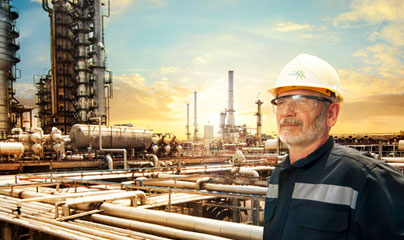
Carbon Capture, Utilization and Storage (CCUS)
CCUS is a leading solution for reducing emissions in energy intensive sectors such as natural gas processing, chemicals and cement. With the emergence of regulatory incentives, CCUS is also becoming an increasingly critical, cost-effective pathway toward decarbonization in countries with significant fossil fuel infrastructures. Explore how John Crane is accelerating CCUS deployment through market-ready technologies and innovative solutions.
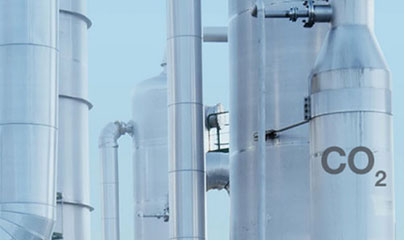
Hydrogen
Low-carbon hydrogen represents a key emerging pathway for lowering carbon emissions across hard-to-abate sectors such as refining, chemical, steel and heavy-duty transport. At John Crane, we believe that all sources of low-carbon hydrogen production should be deployed, including through renewable and nuclear power, and traditional natural gas reforming retrofitted with carbon capture technologies. Explore our hydrogen-ready technologies and retrofit services, which deliver value across the new hydrogen value chain — including transportation and storage.
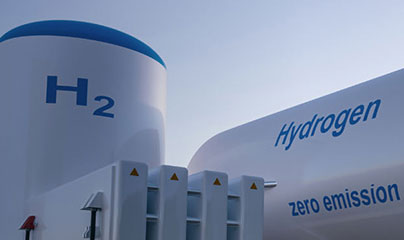
Greenhouse Gas (GHG) Emissions Reduction
GHG emissions such as methane are typically much more potent contributors to global warming than carbon dioxide. Reducing these emissions offers a viable solution to decarbonizing the oil and gas industry. With a legacy of reducing methane emissions through advanced sealing technologies, John Crane is uniquely positioned to help oil and gas companies make tangible progress at pace and on a large scale. Learn more about our portfolio of GHG-reducing solutions.
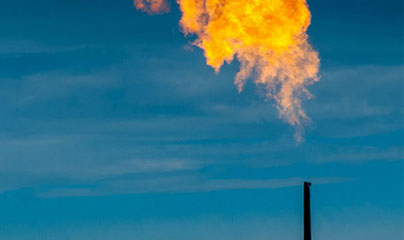
Resources
Supercritical CO2 Webinar
CCUS initiatives are key to achieving net zero targets. Yet to accelerate progress, operators must address the significant challenges posed by CO2 — including supercritical CO2 (sCO2). Join John Crane’s experts for an in-depth webinar on this mission-critical new energy topic.

Methane White Paper
In the race to reduce GHG emissions, there is perhaps no challenge more urgent than methane. View our white paper now to explore market-ready solutions that curb methane emissions and enhance reliability.
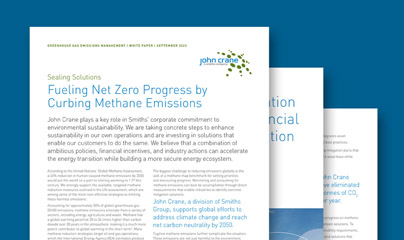
Innovative Solutions eBook
With John Crane, the energy transition isn’t just possible; it’s already being achieved by customers around the world. Read our latest eBook to discover five innovative sealing solutions that are helping operators achieve their sustainability and operational goals.

New Energy Opportunities eBook
Whether you’re looking to decarbonize your existing operations or accelerate your new energy deployment, our eBook is filled with must-read insights to help you shape your new energy reality. Explore key risks and opportunities for energy efficiency, GHG emissions, renewable hydrogen and CCUS.
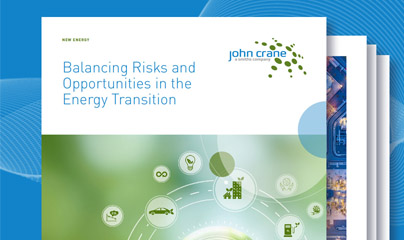
Interactive CCUS Brochure
We offer a robust portfolio of solutions designed to meet current and future CCUS needs. View our interactive brochure to explore John Crane’s market-ready innovations for CCUS compression, pumping and filtration, which are enabling flagship carbon capture initiatives around the globe.
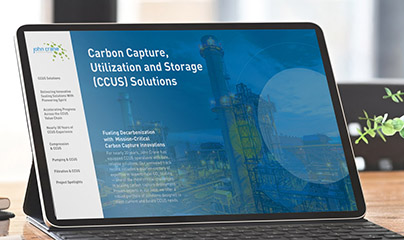
Interactive Hydrogen Brochure
Solidifying our industry’s sustainable future will require the rapid acceleration of scalable renewable hydrogen solutions. View our interactive brochure to explore market-ready innovations that are helping operators achieve tangible progress today.
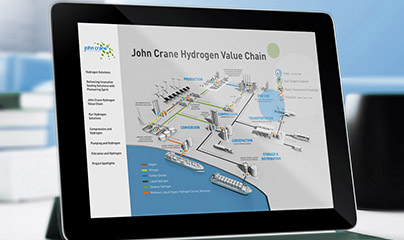
Retrofit Case Study
When an NGL extraction plant in the Middle East wanted to lower emissions, operation and maintenance costs — all while increasing reliability and safety — John Crane delivered a winning solution. View the case study now to discover how our Wet-to-Dry Gas Seal Retrofit reduced the customer’s emissions by 97%.
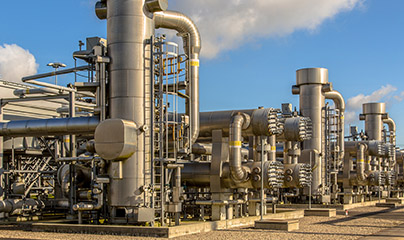
Supercritical CO2 Case Study
Our customer required a highly efficient compressor solution for a semi-closed cycle that utilized CO2 as a working fluid. The aim was to achieve a net efficiency of 55% to 59% while capturing 97% of the plant’s CO2 — and John Crane delivered. View the case study to learn more.
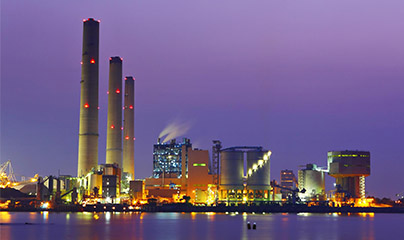
Hydrogen Generation Guide
Amid the array of pathways to decarbonization, hydrogen has emerged as one key lever for reducing global emissions. View our guide for an insightful overview of the renewable hydrogen landscape, including key production methods, transportation and storage challenges, and more.
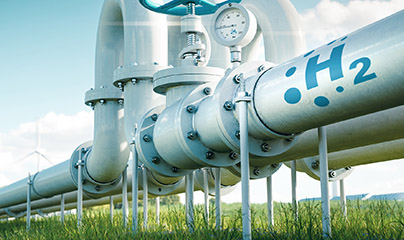
CO2 Dry Gas Seals Case Study
When a fertilizer producer was utilizing outdated CO2 technology, a leading compressor manufacturer trusted John Crane to provide its customer with a reliable solution. Learn how our custom dry gas seals opened new markets for the fertilizer producer and compressor manufacturer alike.
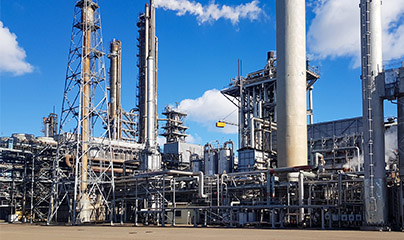
Our Experience
Powering a Sustainable Future, Today
100+ Years
John Crane’s dry gas seal has prevented millions of tonnes of GHG emissions from entering the atmosphere — a century-long legacy that continues in the new energy era.
5,000+ H2 Units
Since producing the first hydrogen seal in 1979, John Crane has installed more than 5,000 seals, filters, couplings and systems in hydrogen applications.
80% of CO2 Injected Underground
Approximately 80% of the world’s CCUS sites with carbon dioxide injected underground utilize John Crane dry gas seals.
Reducing Water Consumption Through Pumping Seal Upgrades
For decades, one of the world’s leading oil and gas companies used water injection clusters to enhance oil recovery from existing reservoirs. In support of a company-wide operational improvement strategy, it asked John Crane to identify a seal solution that would reduce costs, increase mean time between repair (MTBR) and optimize water consumption at a key onshore oilfield in the Middle East.
By comparing performance against a pump equipped with our Type 8610USP seal and Upstream Pumping (USP) seal face technology, we showcased the significant value of upgrading its water pumps: A 100% increase in MTBR, a 900K liter reduction in water consumption in the first year alone and nearly $2 million in cost savings within six years’ time. Making the upgrades would reduce energy usage by 2 million kW in just one year.
Learn MoreDecreasing Emissions by 98% in an Oman Production Plant
A prominent exploration and production firm in Oman partnered with John Crane to reduce emissions and enhance operational efficiency. By replacing conventional oil seals with advanced Type 28 dry gas seals, we helped our customer decrease its CO2 emissions by 98% and lower gas consumption by approximately 2% in the gas turbine — all while achieving higher-quality gas with lower oil removal costs.
Learn MoreEnabling Australia’s Largest Carbon Capture and Storage Facility
John Crane was selected to provide dry gas sealing technologies for a joint venture of international oil and gas companies developing a major liquified natural gas field off the Australian coast. The project would capture up to ~4 million tonnes per year of carbon dioxide, which is then transported and permanently stored more than 1.5 kilometers underground. Reliably capturing and storing the CO2 presented the project with considerable compressor sealing challenges, including handling supercritical fluids and navigating volatile temperature and pressure conditions.
Learn MoreSupporting One of Canada’s Largest Blue Hydrogen Facilities
John Crane was selected to provide sealing technologies for one of Canada’s largest blue hydrogen production sites. The project demonstrated blue hydrogen and carbon capture technologies from the facility’s steam methane reformer units. The site is now capturing up to ~1.2 million tonnes (Mt) per year of carbon dioxide, which is transported and permanently stored over two kilometers below the Earth’s surface in a deep saline aquifer.
Learn More